Asparagine endopeptidase cleaves apolipoprotein A1 and accelerates pathogenesis of atherosclerosis
- PMID: 40371638
- PMCID: PMC12077905
- DOI: 10.1172/JCI185128
Asparagine endopeptidase cleaves apolipoprotein A1 and accelerates pathogenesis of atherosclerosis
Abstract
Atherosclerosis is a slowly progressing inflammatory disease characterized with cholesterol disorder and intimal plaques. Asparagine endopeptidase (AEP) is an endolysosomal protease that is activated under acidic conditions and is elevated substantially in both plasma and plaques of patients with atherosclerosis. However, how AEP accelerates atherosclerosis development remains incompletely understood, especially from the view of cholesterol metabolism. This project aims to reveal the crucial substrate of AEP during atherosclerosis plaque formation and to lay the foundation for developing novel therapeutic agents for Atherosclerosis. Here, we show that AEP is augmented in the atherosclerosis plaques obtained from patients and proteolytically cuts apolipoprotein A1 (APOA1) and impairs cholesterol efflux and high-density lipoprotein (HDL) formation, facilitating atherosclerosis pathologies. AEP is activated in the liver and aorta of apolipoprotein E-null (APOE-null) mice, and deletion of AEP from APOE-/- mice attenuates atherosclerosis. APOA1, an essential lipoprotein in HDL for cholesterol efflux, is cleaved by AEP at N208 residue in the liver and atherosclerotic macrophages of APOE-/- mice. Blockade of APOA1 cleavage by AEP via N208A mutation or its specific inhibitor, #11a, substantially diminishes atherosclerosis in both APOE-/- and LDLR-/- mice. Hence, our findings support that AEP disrupts cholesterol metabolism and accelerates the development of atherosclerosis.
Keywords: Atherosclerosis; Cardiology; Cholesterol; Macrophages; Vascular biology.
Conflict of interest statement
Figures
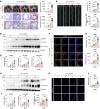

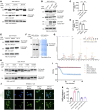
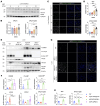
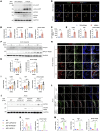
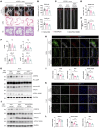
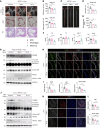
Similar articles
-
ASGR1 Deficiency Inhibits Atherosclerosis in Western Diet-Fed ApoE-/- Mice by Regulating Lipoprotein Metabolism and Promoting Cholesterol Efflux.Arterioscler Thromb Vasc Biol. 2024 Dec;44(12):2428-2449. doi: 10.1161/ATVBAHA.124.321076. Epub 2024 Oct 10. Arterioscler Thromb Vasc Biol. 2024. PMID: 39387120 Free PMC article.
-
Apolipoprotein A1 deficiency increases macrophage apoptosis and necrotic core development in atherosclerotic plaques in a Bim-dependent manner.J Lipid Res. 2025 May;66(5):100782. doi: 10.1016/j.jlr.2025.100782. Epub 2025 Mar 20. J Lipid Res. 2025. PMID: 40120762 Free PMC article.
-
A novel small molecule liver X receptor transcriptional regulator, nagilactone B, suppresses atherosclerosis in apoE-deficient mice.Cardiovasc Res. 2016 Oct;112(1):502-14. doi: 10.1093/cvr/cvw183. Epub 2016 Jul 26. Cardiovasc Res. 2016. PMID: 27460841
-
Effects of native and myeloperoxidase-modified apolipoprotein a-I on reverse cholesterol transport and atherosclerosis in mice.Arterioscler Thromb Vasc Biol. 2014 Apr;34(4):779-89. doi: 10.1161/ATVBAHA.113.303044. Epub 2014 Jan 9. Arterioscler Thromb Vasc Biol. 2014. PMID: 24407029 Free PMC article.
-
Hypoxia in murine atherosclerotic plaques and its adverse effects on macrophages.Trends Cardiovasc Med. 2013 Apr;23(3):80-4. doi: 10.1016/j.tcm.2012.09.004. Epub 2013 Feb 1. Trends Cardiovasc Med. 2013. PMID: 23375596 Free PMC article. Review.
References
MeSH terms
Substances
LinkOut - more resources
Full Text Sources
Medical
Miscellaneous

